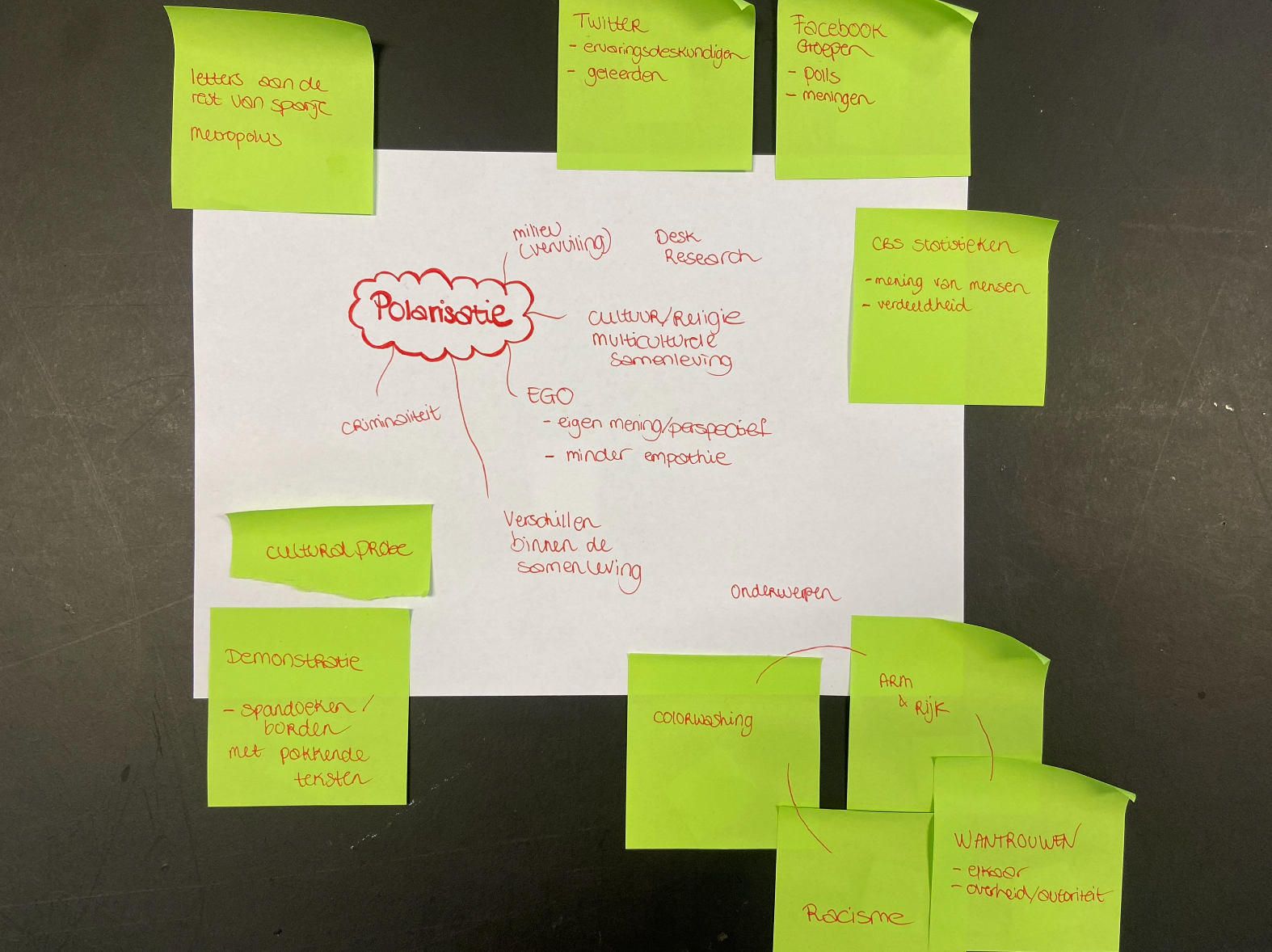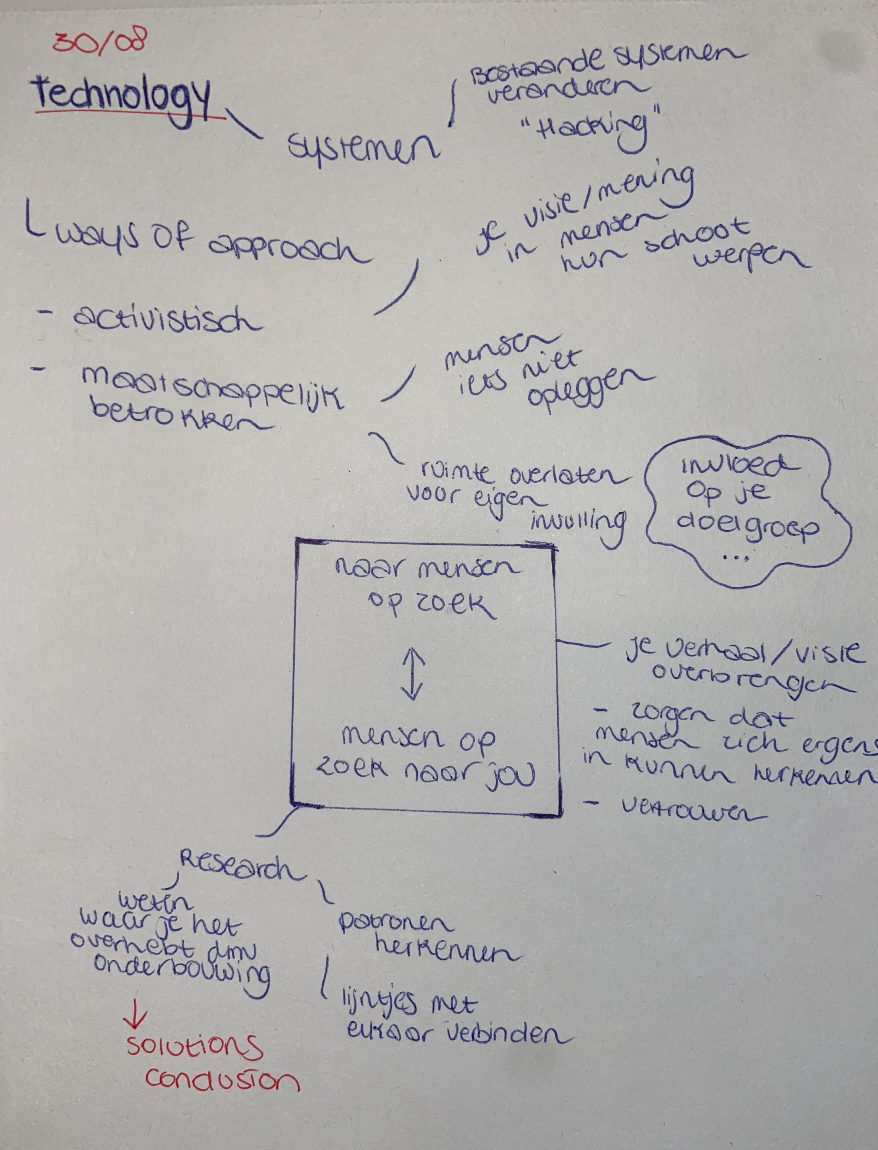proces 3.1
21/09
Colorwashing is an umbrella term for the profit-driven practice of companies and brands to deceptively communicate unsubstantiated values in products and services in order to appeal and market them better to socially and environmentally aware consumers.
- Greenwashing
Is when misleading claims are made on ones own sustainability standards. This is characterized by brands presenting themselves as more environmental friendly than implementing the equivalent amount of sustainable practices internally.
- Pink washing
The promotion of the female empowerment through advertisements, product messaging or further brand communication while hiding ones own exploitative and/or unequal practices towards women.
- Brown washing
Trying to appear as being supportive of Black, Brown, Indigenous and People of Color while not implementing anti-racist and/or BIPoC empowering circumstances into the own business.
- Rainbow washing
Trying to appear as being supportive of LGTBQIA+ movement while not empowering LGTBQIA+ individuals inside of your own business.
- White washing
The attempt to stop people from finding out the true facts about a situation, for example brands which do not take responsibility when tragedies like Rana Plaza happen, yet are at the core of the system.
Besproken onderwerpen: ethiek, polarisatie, purpose-economy en de vraag of we mensen samen willen brengen of dat we juist een standpunt aannemen en het tegendeel willen bewijzen.
22/09
"wij-zij-denken"
Wat ik erg interessant vind aan het begrip polarisatie is dat ik het persoonlijk steeds meer om me heen zie gebeuren. We hebben op dit moment 16 politieke partijen in de tweede kamer waar dat in 2010 nog 11 partijen waren. Ook heb ik het idee dat in de samenleving mensen steeds meer vervreemden van elkaar en zijn steeds minder in staat om zich in te kunnen leven in de mening van anderen.
Ik heb nagedacht over mijn positie als Transformation Designer en over de manier van het benaderen van mijn doelgroep om die transformatie teweeg te brengen. Ik denk als een tijd in deze waar in we nu leven het misschien helemaal niet goed is om een bepaald standpunt in te nemen en de opistie het tegendeel probeert te bewijzen. Op dit moment geloof ik meer in verbinding en het samenbrengen van mensen / groeperingen om een transformatie of een oplossing te laten plaatsvinden.
De onderwerpen binnen waar in ik polarisatie verder in zou willen uitzoeken zijn
- arm en rijk constructies binnen zowel binnen- als buitenlandse samenlevingen
- demonstraties (geschiedenis, doel, etc.)




Gedachte:
"Moet ik een standpunt aannemen
en proberen anderen te overtuigen?
Of wil ik groepen met elkaar verbinden door wellicht niet mijn eigen visie op te leggen?"
01/10
Historical protests
-- George Floyd Protests
-- The March For Science
-- The Women's March on Washington
-- The protestant Reformation
-- The Storming of the Bastille
-- Gandhi's Salt March
-- The Boston Tea Party
-- South Africa's National Day of Protest
-- March on Washington
-- Tiananmen Square
-- Berlin Wall Protests
-- Iraq War Protests
-- The Orange Revolution
"Op grond van artikel 9 van onze Grondwet heeft iedereen het recht om te demonstreren. Dit recht houdt in dat je samen met één of meer personen in het openbaar een mening mag uiten. De inhoud van die meningsuiting doet er, bij de vraag of het mag ja of nee, niet toe."
"Under Article 9 of our Constitution, everyone has the right to demonstrate. This right means that you may express an opinion in public together with one or more persons. The content of that expression matters, when asked by the may yes or no, not allowed."

https://research.vu.nl/ws/portalfiles/portal/2947718
Jacquelien van Stekelenburg
Waarom protesteren mensen?
Qoutes uit het artikel
"Rond de 30% van protesten
bereikt het gestelde doel. " Protest is relatief effectief omdat politici het niet kunnen negeren."
"Naast politiek succes,
wordt de media halen, de publieke opinie beïnvloeden, of solidariteit tonen ook als succes
gezien. Bovendien bij hoog oplaaiende onvrede biedt demonstreren de mogelijkheid
verontwaardiging te uiten en woede te ventileren."
"Een protest demonstratie is
geen impulsieve daad maar een evenement waarvoor ‘vraag’ én ‘aanbod’ zorgvuldig op
elkaar afgestemd moeten worden"
"Waren vroeger demonstraties vooral gericht tegen de politiek, sinds de 20e
eeuw beogen ze taboes te doorbreken of tegen de gevestigde orde in te gaan"
"Dit zou duiden op een overgang van materialistisch waarden―waarin
economische en politieke stabiliteit centraal staan―naar postmaterialistisch waarden―waarin
ontplooiing centraal staat."
27/09 Process heads-up
I had a talk with Nikki and our interests are similar. We decided to couple up with one another. We discussed the assignment that we did in Hill's class. We gathered all the information and we summarized them to 3 key-words on which we would research.
The three key-words are:
- Demonstraties [protesting]
- Arm & Rijk [poor and rich]
- Ego
POLARISATIE
PROTESTING
Research
04/10 Prototypes
Audio representation of demonstration / protest
I added some audio prototypes in relation to "protest". With protests I associate powerful and strong sounds, which are repetitive. I tried to experiment with this so at the end of the project I have a lot of research material, in both text, audio and visual representations.
Different approaches of protesting
- Sit-In Protests
- Marches & Rallies
- Posters & Banners
- Hunger Strike
- Flag Burning
- Riots, Looting & Vandalism
- Bombing Protests
Arab spring
2010 - 2012
Cultural Probes
Anti-Facial Recognition Masks:
https://www.liberties.eu/en/stories/anti-facial-recognition-mask/43570
Tools of protest: Disobedient Objects, the V&A's subversive new show
https://www.theguardian.com/artanddesign/2014/jul/23/tools-of-protest-disobedient-objects-vanda
04/10 Process heads-up Nikki & Marina
For today's meeting it was important that we came up with a subject to work on and where we eventually could create a start-up with.
The focus point for today was "The What and the How?
WHAT
Things discussed:
- Where is the polarization?
Around us in society at this point, people are getting more (verbally) aggressive by to impose their vision, opinions.
- How can we reduce polarization? > How can we experience the other and each others feelings?
- How can we make/show other people’s view to one another?
HOW
- More a technical thing
- Tangible
- Create a technical sense
- To place ourselves in the other - a communication tool
- Brainhacking
- Know what people are thinking
There is so much miscommunication, if i could see your heart(beat) maybe i could understand.
An extension of your body.
Create compassion → that is the aim
Technical empathic enhancement
Tool for better conversation → use for political things?
The bodys reaction
What is the connection between stress/the body/ and the mind?
PROTOTYPES - class oct 11
Inspiration
Bart Hess
Daan Roosegaarde
"Lorem ipsum dolor sit amet, consectetur adipiscing elit, sed do eiusmod tempor incididunt ut labore et dolore magna aliqua. Ut enim ad minim veniam, quis nostrud exercitation ullamco laboris nisi ut aliquip ex ea commodo consequat. Duis aute irure dolor in reprehenderit in voluptate velit esse cillum dolore eu fugiat nulla pariatur. Excepteur sint occaecat cupidatat non proident, sunt in culpa qui officia deserunt mollit anim id est laborum."
"Lorem ipsum dolor sit amet, consectetur adipiscing elit, sed do eiusmod tempor incididunt ut labore et dolore magna aliqua. Ut enim ad minim veniam, quis nostrud exercitation ullamco laboris nisi ut aliquip ex ea commodo consequat. Duis aute irure dolor in reprehenderit in voluptate velit esse cillum dolore eu fugiat nulla pariatur. Excepteur sint occaecat cupidatat non proident, sunt in culpa qui officia deserunt mollit anim id est laborum."
Prototypes Yanni explained
The prototypes which I made are more 2D compared to Niki's. We decided to make a selection of both 2D and 3D prototypes so that we had a broad research of prototypes. In this way we can experiment which method matches our aiming outcome best.
The audio file is a sort of simulation of a boomerang since we're talking about a mutual transmission within our initiative. I wanted to mimic that in some way.
The second prototype I edited from an existing video. I had a dream about newton’s cradle but I didn’t know in my dream the name of this object. I had a déjà-vu that I was asking someone about this and he gave me information about this object.
The next day I actually asked him. The reason why I thought this was interesting is because newtons cradle is a part of physics and it talks about laws. It talks about how you need to have force to make something moving and it returns in the same way but the kinetic energy will decrease. I also thought this was an interesting phenomenon to use in the research and perhaps do an iteration on
Prototypes Niki explained
*These prototypes could be played at the mywdka blogpage.
11/10 evaluation Niki & Hill prototypes
Expert information
Goal to take away the polarization.
Ideas/Questions that arose from the talk with Hill:
Mediate or interactive? Interactive
What is our role in relation to the object? We as makers don't want to take a standing point: to what is good/bad and what is right/wrong - we are at a neutral position. We are the mediators to an object which is interactive. We want to increase polarization amongst people, in conversations.
Care vs. empathy: Empathy is what we want to achieve. Can you feel empathy as a body response? Maybe we can create something that can create that physical feeling of empathy.
Realization over shock value. We want people to come to a realization of empathy, within themselves. Create a feeling or experience within the body.
Transfer empathy into a physical sense. Creates a body reaction. Tangible empathy.
Dialogue in visuals: have it interactive
How do visuals communicate?
Is it a socratic dialogue, how do you make that more visual?
Sensor → FACILITATOR!
Do we have a set emotion for empathy? No, can be both happy and sad, the goal to make the person feel for someone else.
11/10 evaluation Niki & Marina prototypes
What/who is causing polarisation?
Maybe the device is for those?
ideas:
- implement into school, you take it into your life later on like the reminder of the pacer test.
- take a step back instead of finding a solution
- this tool can be a conversation stater
- take care that its not too symbolic
- involve your public in your research - design research
- Where is the polarisation the most
- Added value to our society - something new
12/10
When we had the Future Thinking class by Evelien Dieleman. Her profession is trend researcher. When we were attending her presentation she gave some examples and was talking about topics which did correspond with our research.
ATE Cancer cookie
With this cookie, a person who has not experienced how life is with cancer, has now the possibility to taste what a person suffering of cancer tastes while eating a cookie because their taste is affected.

Another example is a game that kids could play by using braille. Both kids who have the ability to see and kids who don't have can play a game together.
And the last example she gave and I want to add is a photograph by Sanne de Wilde. She was visiting this island. In the late eighteenth century a catastrophic typhoon swept over Pingelap which killed all citizens. One of the survivors, the king, carried the rare achromatopsia-gen that causes complete colorblindness, which results in all of the citizens now colorblind. Sanne de Wilde reinstalled her camera and created photography that shows how these people see their island.

What these examples have in common is that they try to include people with disability (people who have cancer could experience the disability to taste their food properly)
Why I think it's important to add this to the research is because it's overlapping with the information Niki and I were already looking into.
Evelien also gave us some tips:
- try to turn this negative side of polarisation.
She as a trend researcher would think this could be innovative and really reach people
- You could try to create something that could recognize empathy in the brain and perhaps
Sources to look into:
- Wonderman Thompson
- Sogeti Lans
- Liedewijn Edelkort
Notes from Future thinking class
RESEARCH
PROTOTYPES
Sources Neurobiology
https://herseninstituut.nl/brainfacts/spiegelneuronen/
https://sciencing.com/your-brain-on-empathy-13714004.html
https://kieshelder.nl/hoe-werkt-een-brillenglas